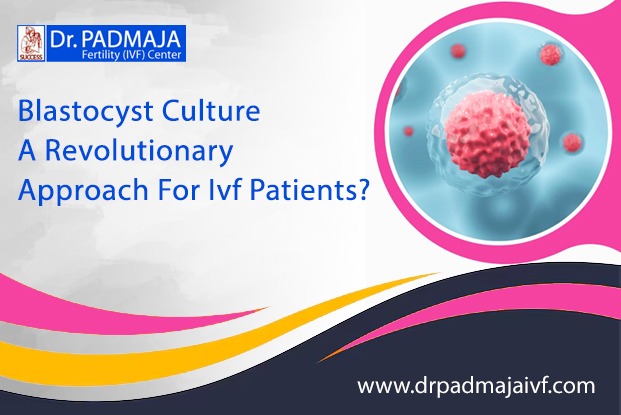In the journey of in vitro fertilization (IVF), advancements in technology have transformed the way we approach fertility treatments. One such groundbreaking technique is blastocyst culture, which is gaining traction among patients seeking assistance in their path to parenthood. If you’re considering IVF, understanding this revolutionary approach can make a significant difference in your treatment experience.
What is Blastocyst Culture?
Blastocyst culture involves the development of embryos for five to six days after fertilization, allowing them to reach the blastocyst stage before being transferred into the uterus. This is in contrast to traditional methods where embryos are typically transferred after just two to three days of development. By allowing embryos to grow longer in the lab, fertility specialists can better assess their quality and select the most viable ones for implantation.
Why Choose Blastocyst Culture?
Higher Success Rates: One of the most compelling reasons to consider blastocyst culture is its potential for higher success rates in IVF. Studies have shown that transferring blastocysts can lead to increased implantation rates and better chances of pregnancy compared to transferring earlier-stage embryos.
Better Selection: By culturing embryos to the blastocyst stage, fertility specialists can identify which embryos are the most viable. This selective process enhances the chances of successful implantation, making it a preferred method for many IVF patients.
Optimized Synchronization: Transferring blastocysts helps synchronize embryo development with the uterine lining, improving the conditions for implantation. This synchronization is crucial for the success of IVF, as it ensures that the embryo is introduced at the optimal time for attachment to the uterine wall.
Reduction in Multiple Pregnancies: With blastocyst culture, the likelihood of multiple pregnancies decreases. Since the best quality embryo is chosen for transfer, patients can often have a healthy singleton pregnancy, reducing the risks associated with carrying multiples.
The Role of Experienced IVF Centers
Choosing the right IVF center is essential for maximizing your chances of success with blastocyst culture. One of the best IVF centers in Hyderabad is the Dr. Padmaja IVF Center, renowned for its advanced techniques and compassionate care. Dr. Padmaja, a leading expert in fertility treatments, has made significant contributions to the field and is committed to helping patients achieve their dreams of parenthood.
At the Dr. Padmaja Fertility Center, patients benefit from state-of-the-art facilities, a skilled team of professionals, and personalized treatment plans tailored to individual needs. The center employs the latest technology, ensuring that patients receive the best possible care throughout their IVF journey.
The Process of Blastocyst Culture
The blastocyst culture process begins with ovarian stimulation, during which hormones are administered to encourage the ovaries to produce multiple eggs. Once the eggs are retrieved, they are fertilized in the laboratory. The embryos are then monitored for several days, typically five to six, as they develop into blastocysts.
During this time, embryologists carefully assess the embryos’ growth and quality. The best embryos are selected for transfer, while others may be frozen for future use. This careful selection process is a hallmark of the Dr. Padmaja IVF Center’s approach, ensuring that patients receive the highest quality care.
Preparing for Your IVF Journey
As you embark on your IVF journey, there are several steps you can take to optimize your chances of success with blastocyst culture:
Choose the Right Clinic: Research and select a reputable clinic, such as the Dr. Padmaja Fertility Center, known for its success rates and patient care.
Consult with Experts: Schedule consultations with fertility specialists to discuss your specific needs and concerns. Their knowledge will help you make well-informed decisions on your course of care.
Sustain a Healthy Lifestyle: Give careful consideration to a well-rounded diet, consistent exercise, and stress reduction methods. A healthy lifestyle can significantly impact your overall well-being and fertility.
Stay Informed: Educate yourself about the IVF process and the benefits of blastocyst culture. Acquiring knowledge enables you to take an active role in your treatment regimen.
Conclusion
Blastocyst culture represents a significant advancement in the field of IVF, offering hope and improved outcomes for patients. By understanding this innovative approach and seeking care at a leading facility like the Dr. Padmaja IVF Center, you can enhance your chances of achieving a successful pregnancy. If you’re considering IVF and want to learn more about blastocyst culture, reach out to the best IVF center in Hyderabad today. With the right support and expertise, your journey to parenthood can be a rewarding experience. Embrace the possibilities that modern fertility treatments offer and take the first step toward fulfilling your dreams of becoming a parent.
About The Author :

If Dr. Padmaja Divakar is a public figure or a professional in a specific field, I recommend checking her official website, professional profiles, or reliable online sources for the most up-to-date and accurate information about her background, qualifications, and achievements.
Frequently Asked Questions (faqs)
1. How does blastocyst culture work?
Embryos are cultured in a controlled environment for five to six days after fertilization. They are monitored for development, and only the healthiest embryos are selected for transfer.
2. What are the chances of success with blastocyst culture?
Success rates vary based on individual factors, but studies show that using blastocysts can lead to higher implantation and pregnancy rates compared to transferring embryos at an earlier stage.
3. Is blastocyst culture suitable for all IVF patients?
Not all patients may benefit from blastocyst culture. Factors such as age, egg quality, and the number of embryos created play a role. Your fertility specialist can help determine if it’s a good option for you.
4. What happens to embryos that don’t reach the blastocyst stage?
Embryos that do not develop to the blastocyst stage may not be viable for transfer. However, some may be cryopreserved (frozen) if they reach an earlier stage of development.
5. Are there risks associated with blastocyst culture?
The main risk is the potential loss of embryos during the extended culture period. However, many patients find the benefits of higher success rates outweigh this risk.
6. How does blastocyst culture affect embryo freezing?
Embryos that reach the blastocyst stage can be frozen for future use, allowing patients to attempt pregnancy later without undergoing another egg retrieval cycle.

